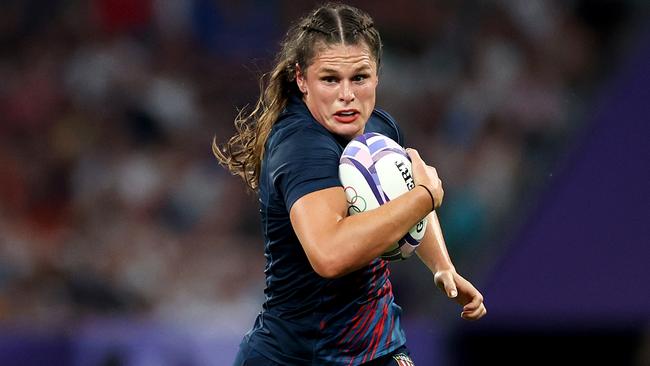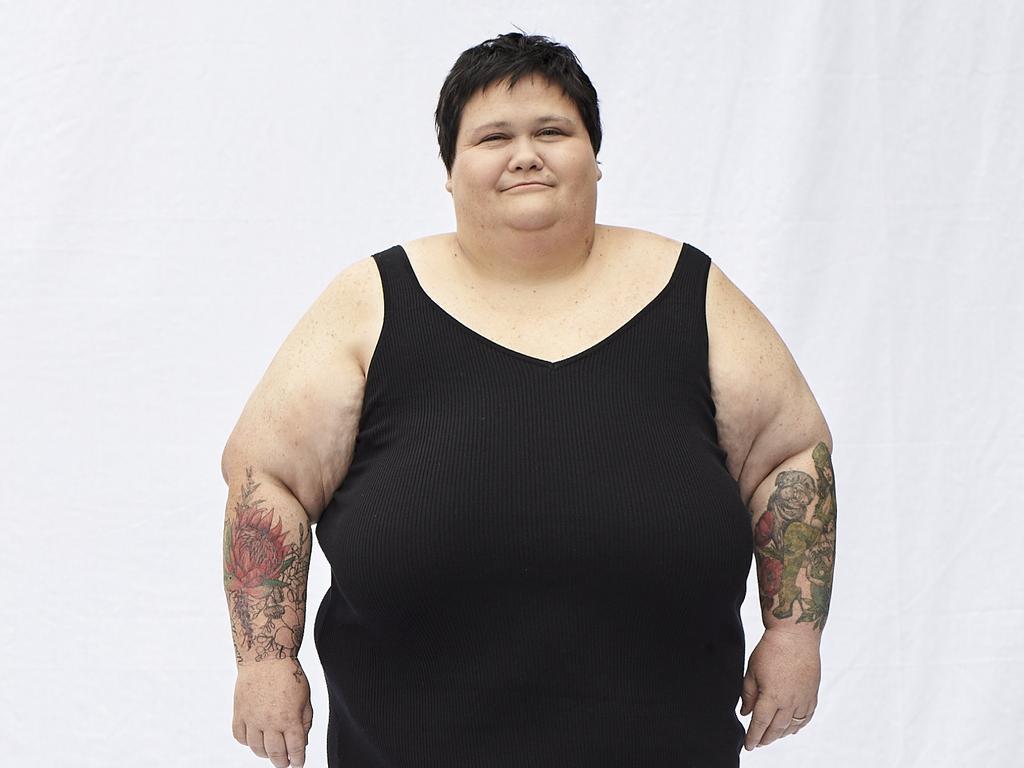Olympian Ilona Maher’s BMI said she was overweight. Is it time for an obesity diagnosis overhaul?
Over-reliance on the Body Mass Index has sparked a push supported by 75 medical organisations to back a Global Commission to overhaul obesity diagnosis and classification.

She’s known for her signature red lipstick and agile yet powerful playing style. But when imposing rugby union star Ilona Maher took to the field for Team America at the Paris Olympics, she endured taunts about her weight.
Then she went on social media to explain how she had been described as overweight for most of her life by people who relied on the much-criticised Body Mass Index and knew its reading wasn’t reflective of her muscular build. As her sporting career progressed, she got access to sports doctors and dietitians who assured her the reading was imprecise and did not take into account her muscular body.
According to the index, readings of between 25 and 29.9 are considered overweight while obesity is described for readings between 30 and 39.9.
“I’m 5’10” and 200 pounds, and I have about 170 pounds of lean mass on me. But BMI doesn’t tell you what I can do on the field or how fit I am,” she said in the post before concluding “So yeah, I do have a BMI of 30. I am considered overweight … But alas, I’m going to the Olympics and you’re not.”


It’s a prime example of the shortcomings of the BMI. The index is calculated by dividing a person’s weight in kilograms by the square of their height in metres. In Australia, it’s one of the tools health professionals use to tell whether patients are of a healthy weight. But as Maher pointed out, it is not always reliable on its own.
Now, the Global Commission on Clinical Obesity is warning against an over-reliance on the index, which it describes as “unreliable” and risks allowing patients to be misdiagnosed and overmedicalising the condition. Writing in the latest edition of the journal The Lancet Diabetes and Endocrinology, the group calls for less reliance to be put on BMI alone.
“We recommend that BMI should be used only as a surrogate measure of health risk at a population level, for epidemiological studies, or for screening purposes, rather than as an individual measure of health,” the commission writes.
It also suggests there should be two defined types of obesity, sets out a framework to determine those types, and calls for an end to weight stigma, which it says could undermine effective treatment and medically sound policies set by regulators and health insurers globally.
“We want to overhaul dramatically the ideas about how we diagnose obesity and how we improve global healthcare practices regarding obesity and, of course, how it’s going to change policies,” said Professor John Dixon, adjunct professor at the Iverson Health Innovation Research Institute, Swinburne University of Technology.
Debate around whether or not obesity should be classified as a disease has been ongoing, controversial and complex, with resistance from some medical groups. A person’s weight is influenced by the number of calories consumed, how many of those calories are stored, and how many are burned; but how a person stores and burns the calories can be influenced by both environmental and genetic factors.
“The idea of obesity as a disease has been very controversial for many years,” said Professor Francesco Rubino, commission chair and chair of metabolic and bariatric surgery at Kings College London. He is also an honorary consultant at King’s College Hospital in the UK.
“The reason why it has never been settled is because obesity is a spectrum, and this idea of (obesity being) only a disease or only a risk factor really clashes with a reality where you can have people who have excess body fat but really have normal, preserved, normal organ function. But on the other hand, there are people who have excess body fat, and not because of other diseases that are associated with obesity. But because of excess body fat itself; they experience impairment in the functions of their organs – the heart, the joints, the kidneys, the liver and so on.”
The Global Commission says existing medical definitions of obesity are too rigid and what’s needed is a more nuanced approach where body fat is measured in addition to BMI.
The first of the two new types of obesity being proposed is “clinical obesity”. “We define clinical obesity as a chronic, systemic illness characterised by alterations in the function of tissues, organs, the entire individual, or a combination thereof, due to excess adiposity,” the group writes. “Clinical obesity can lead to severe end-organ damage, causing life-altering and potentially life-threatening complications.”
The group wants “clinical obesity” considered a chronic disease on its own, and therefore patients offered appropriate, respectful, and personalised management and treatment options. “People with clinical obesity should receive timely, evidence-based treatment, with the aim to induce improvement (or remission, when possible) of clinical manifestations of obesity and prevent progression to end-organ damage.”
Louise Baur is part of the commission and a professor of child and adolescent health at the University of Sydney. She is also an immediate past-president of the World Obesity Federation.
“We’ve introduced the concept of clinical obesity as a distinct and standalone disease, not something that really reflects other diseases, and it recognises that obesity can coexist with preserved normal organ and whole body function.”
The second category being proposed is “pre-clinical obesity” and describes when obesity is present but a person has no associated illness.
Again, the group writes: “People with preclinical obesity should undergo evidence-based health counselling, monitoring of their health status over time, and, when applicable, appropriate intervention to reduce risk of developing clinical obesity and other obesity-related diseases, as appropriate for the level of individual health risk.”
To determine which category a patient fits into, the commission has developed a framework to be used by medical practitioners. It includes 18 diagnostic criteria for adults and 13 for children and adolescents.

While Dieticians Australia welcomes less reliance on the BMI, the group’s president, Dr Fiona Willer, is concerned the two proposed classifications could further ingrain weight stigma – something the new advice is meant to reverse.
“The reason that they’ve put this paper out is because of that kind of criticism in the past, but these new diagnoses, I can’t see how they actually change that.
“When we create new diagnoses, we have to do so really carefully, because there are implications to how people feel about themselves, there’s implications to the health system, there’s implications to cost and at what benefit would designating it. And the label of ‘pre-clinical obesity’, they’re trying to have it both ways. They’re essentially healthy (people), is what they’re saying in the paper, but we want to give them a label, and the label itself can have a nocebo effect at.”
She does not think the new classifications will be adopted instantly in Australia.
Patients and advocates have been urging changes around the use of BMI and obesity more broadly for years. They’ve long argued the health system is fraught with weight stigma that can be so ingrained, it risks patients being misdiagnosed or having serious disease or ailments overlooked. Other times, patients can be denied surgery or other treatments because of their BMI.
It is an issue noted by the commission, which advises reform is needed. “Public health strategies to reduce the incidence and prevalence of obesity at population levels must be based on current scientific evidence, rather than unproven assumptions that blame individual responsibility for the development of obesity. Weight-based bias and stigma are major obstacles in efforts to effectively prevent and treat obesity; healthcare professionals and policy makers should receive proper training to address this important issue of obesity.”
Professor Rubino said many people still held the belief obesity could be easily reversed if someone just ate less and exercised more. He said simplistic assumptions like those were drivers of weight-stigma.
“The assumption that people can diet and exercise and lose the weight to prepare for, whether it’s breast reduction, whether it’s liposuction, all of these things, or, in fact, for orthopaedic surgery and other surgical interventions … It’s a lie. Some of these things are actually related to the clinical obesity disease.”
Professor Dixon agreed and said a lot of work needed to be done to destigmatise obesity including within the medical profession. “Patients see it and it puts them off and it damages them.”
The next step is convincing the world’s medical community to see the worth of what’s being proposed by the commission and adopting it. They are not aiming to change clinical guidelines.
Dr Terri-Lynne South is the chairwoman of Obesity Management at Royal Australian College of GPs and was independent of the commission, but welcomes its findings.
“Understanding that clinical obesity is being driven by genetics, and it’s not just an individual’s sole responsibility, just like we don’t necessarily blame someone for developing hypertension, I think we need to start treating clinical obesity similar to what we do with high blood pressure, high cholesterol, Type 2 diabetes. Yes, there are lifestyle factors that can help manage these conditions, but we need to be able to do better funding evidence based and not blame the individual.”
She thinks GPs are aware change is needed and said many were already adjusting their approach to weight management.
“I welcome a change in the definition of obesity. I think we’ve been overusing BMI as a diagnostic factor when it really is more of a risk factor, rather than something that should be used for diagnosis.“
“It’s starting to get that groundswell of starting to see that obesity is more than a person’s weight. BMI, it’s quite complex, but it doesn’t mean that we don’t bring up weight related issues in a GP consultation.”





To join the conversation, please log in. Don't have an account? Register
Join the conversation, you are commenting as Logout